Orchids, with their intricate and stunning beauty, have long been a subject of fascination for both nature enthusiasts and art aficionados. In this article, we’ll delve into the world of orchid coloring pages, offering a creative and therapeutic way to explore the intricate details of these remarkable blooms. Whether you’re an experienced artist or simply looking for a relaxing pastime, our orchid color sheets provide an engaging canvas for you to express your creativity and appreciate the artistry of nature. Join us as we dive into the world of orchid-themed coloring and discover the joy of bringing these botanical wonders to life on paper.
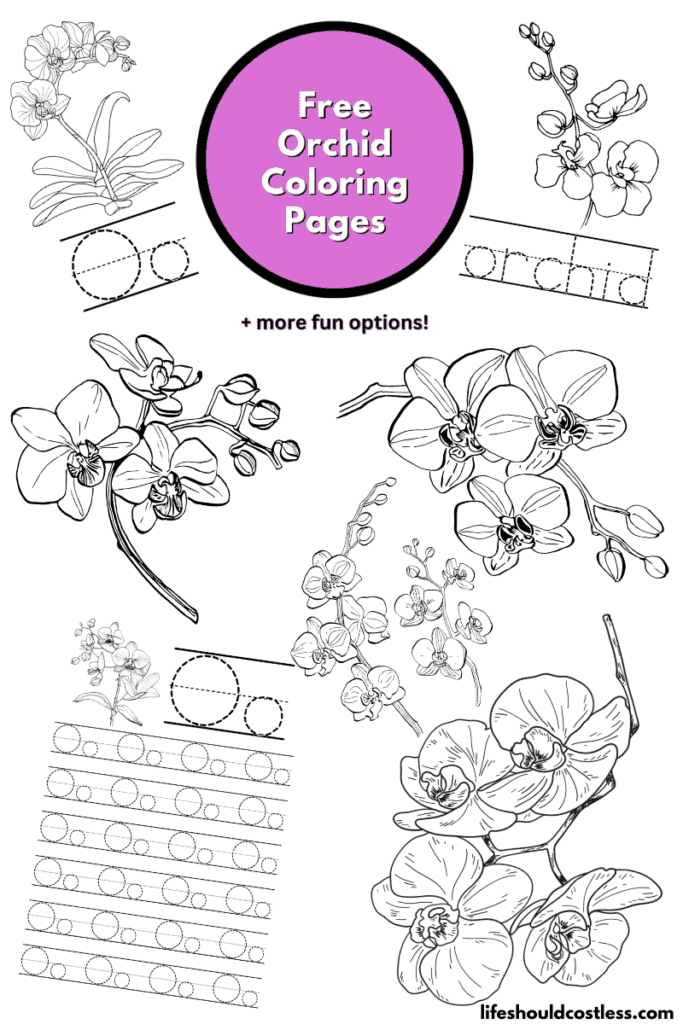
You’re welcome to choose the design that resonates with you the most, then simply download the free PDF template, print it out, and immerse yourself in the fun of coloring as much as you’d like.
Alternatively, these designs can also serve as inspiration for embroidery patterns, or provide ideas for creating delicate line tattoos.
Orchid facts
If you’re new to my coloring pages, it’s worth mentioning that I enjoy providing the opportunity to learn more about the subject, allowing you to seamlessly incorporate an educational aspect into your coloring experience.
So, let’s dive right in!
Here are lots of fun and interesting facts about orchids:
- Orchid Diversity: Orchids are one of the largest and most diverse families of flowering plants, with over 25,000 documented species and thousands of hybrids.
- Widespread Distribution: Orchids can be found on every continent except Antarctica, thriving in a wide range of environments from tropical rainforests to arctic tundras.
- Unique Reproductive Strategy: Orchids have a unique reproductive strategy. They often rely on specific pollinators, and some orchids mimic the appearance and scent of female insects to attract males for pollination.
- Vanilla Flavor: The vanilla bean comes from the vanilla orchid (Vanilla planifolia). Vanilla is one of the most popular flavors in the world, and it originates from the orchid’s seed pods.
- Longevity: Orchids are known for their longevity. Some orchid species can live for decades, and even centuries, with proper care.
- Tiny Seeds: Orchid seeds are among the smallest in the plant kingdom. They are so tiny that they lack the endosperm found in most seeds, which means they require a symbiotic relationship with fungi to germinate.
- Hybrids Galore: Orchids are commonly hybridized to create new and unique varieties. Orchid enthusiasts and breeders have produced countless hybrids with diverse colors and patterns.
- Aerial Roots: Many orchids have aerial roots that help them cling to trees and rocks in their natural habitats. These roots are also used for water and nutrient absorption.
- Long-Lasting Flowers: Orchid flowers often last longer than those of many other plants. Some varieties can remain in bloom for several weeks or even months.
- Symbolism: Orchids are associated with various symbolic meanings. In some cultures, they symbolize love, beauty, luxury, and strength. In others, they are believed to bring good luck and fortune.
- Orchidelirium: In the 19th century, there was a period known as “orchidelirium” when orchid collecting became an obsession among the wealthy. Collectors paid exorbitant prices for rare orchids.
- Orchids in Space: Orchids have been sent into space for scientific experiments. Researchers have studied how orchids grow and adapt in microgravity environments.
- Moth and Butterfly Orchids: Some orchids are specifically adapted to attract moths or butterflies as pollinators. These orchids often have elaborate designs and scents to lure their pollinators.
- Longest Flower Stalk: The tallest orchid, Grammatophyllum speciosum, can produce flower spikes that reach up to 10 feet (3 meters) in length.
- Cultural Significance: Orchids have cultural significance in many countries. They are a symbol of refinement and beauty in Chinese culture and have been used in traditional medicine.
These fascinating facts only scratch the surface of the orchid’s complexity and diversity, making them truly captivating plants to explore and admire.
We learned a lot about orchids, but there is definitely much more to know about them.
If you would like to continue reading, here are some other reputable resources to learn about them:
- https://en.wikipedia.org/wiki/Orchid
- https://www.almanac.com/plant/orchids
- https://kids.britannica.com/kids/article/orchid/353573
- https://www.si.edu/stories/five-things-know-about-orchids
- https://gardens.si.edu/learn/for-educators/what-is-an-orchid/
- To see all of my free printables, go here.
- To see an alphabetized index of my coloring pages, go here.
- To see all of my botanicals coloring pages, go here.
- To see all of my floral coloring pages, go here.
Coloring tips
Coloring orchids can be a delightful and creative endeavor.
Here are some tips and tricks to help you achieve beautiful and realistic results when coloring orchids:
- Reference Images: Find high-quality reference images of orchids to study their colors, shapes, and details. This will help you accurately depict the orchids in your coloring.
- Select the Right Colors: Orchids come in a wide range of colors and patterns. Choose a color palette that matches the specific orchid species or variety you’re coloring. Watercolor pencils, markers, or colored pencils can all work well for this.
- Layering: Build up your colors gradually by layering. Start with lighter shades and gradually add darker ones to create depth and dimension in the petals and leaves.
- Blending: Use blending tools like blending stumps, a colorless blender pencil, or a wet brush to seamlessly blend colors together and achieve a smoother transition between shades.
- Textured Paper: Choose paper with some tooth or texture, which helps grip the coloring material and allows for better blending and layering.
- Highlighting and Shadows: Pay attention to the natural highlights and shadows on the orchid. Add lighter colors to highlight areas where light hits the petals and darker colors for shadowed areas.
- Experiment with Techniques: Try different coloring techniques like stippling, hatching, or cross-hatching to achieve various textures and effects in your orchid coloring.
- Background: Consider the background of your orchid drawing. A simple background or a gradient can make your orchid stand out more effectively.
- Practice Patience: Coloring orchids, especially detailed ones, can be time-consuming. Take your time and enjoy the process.
- Fine Details: Use fine-tipped pens or colored pencils to capture intricate details like veins on the petals and the delicate structure of the flower.
- Protect Your Work: If you’re working with colored pencils, consider using a fixative spray to protect your finished piece from smudging.
- Blend with Solvents: If you’re using colored pencils, you can experiment with blending solutions like odorless mineral spirits to achieve smoother blends and richer colors (when age-appropriate of course).
- Study Botanical Illustrations: Look at botanical illustrations of orchids to learn how artists have captured their beauty and structure.
- Seek Feedback: Share your work with fellow artists or online communities for feedback and constructive criticism. Learning from others can be invaluable.
Remember that coloring is a creative process, and there’s no right or wrong way to do it.
Allow yourself to experiment, learn, and have fun as you bring your orchids to life on paper.
Options For Printing:
Letter O is for orchid writing practice worksheets
*My letter O is for orchid coloring sheet printables are exclusively tailored for classroom use and are the only printables on this page that can be utilized in a public setting without requiring written permission.
However, if someone inquires about the source, kindly share the link to this post.
Your cooperation is greatly appreciated!

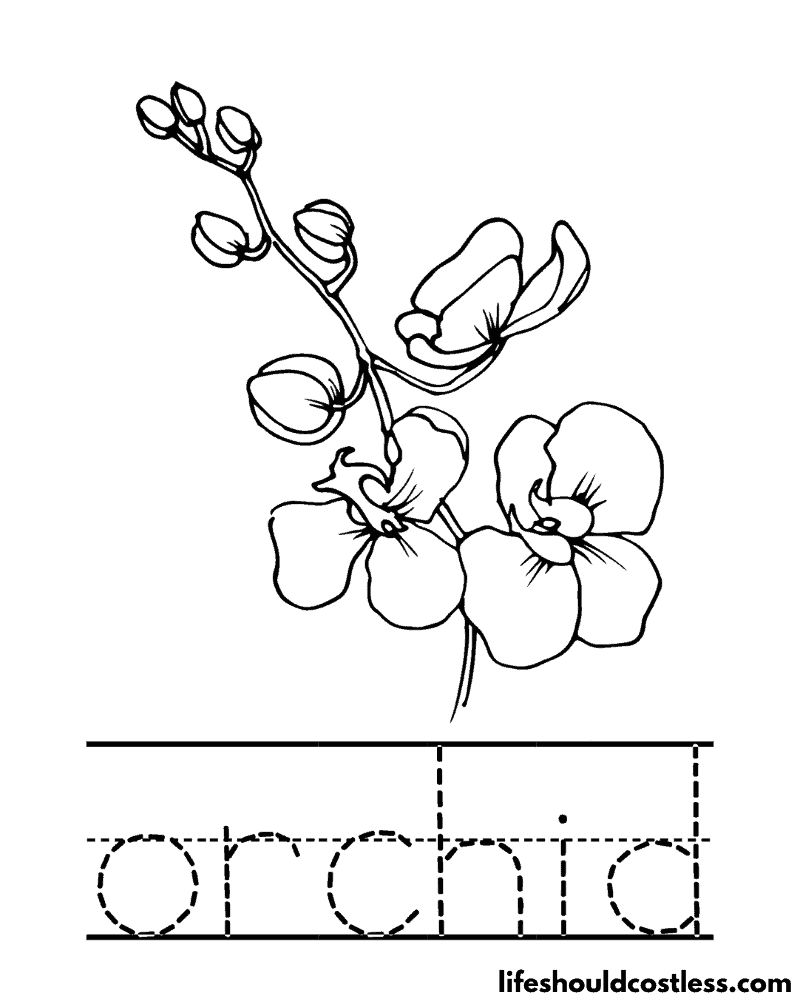
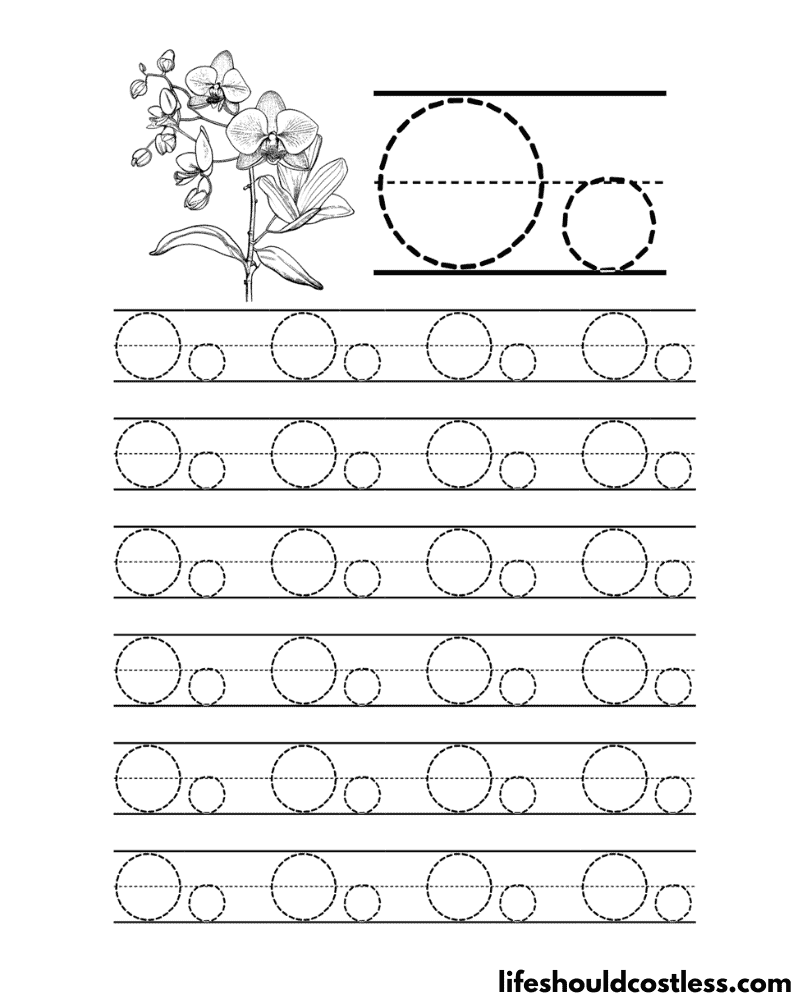
Various orchid designs
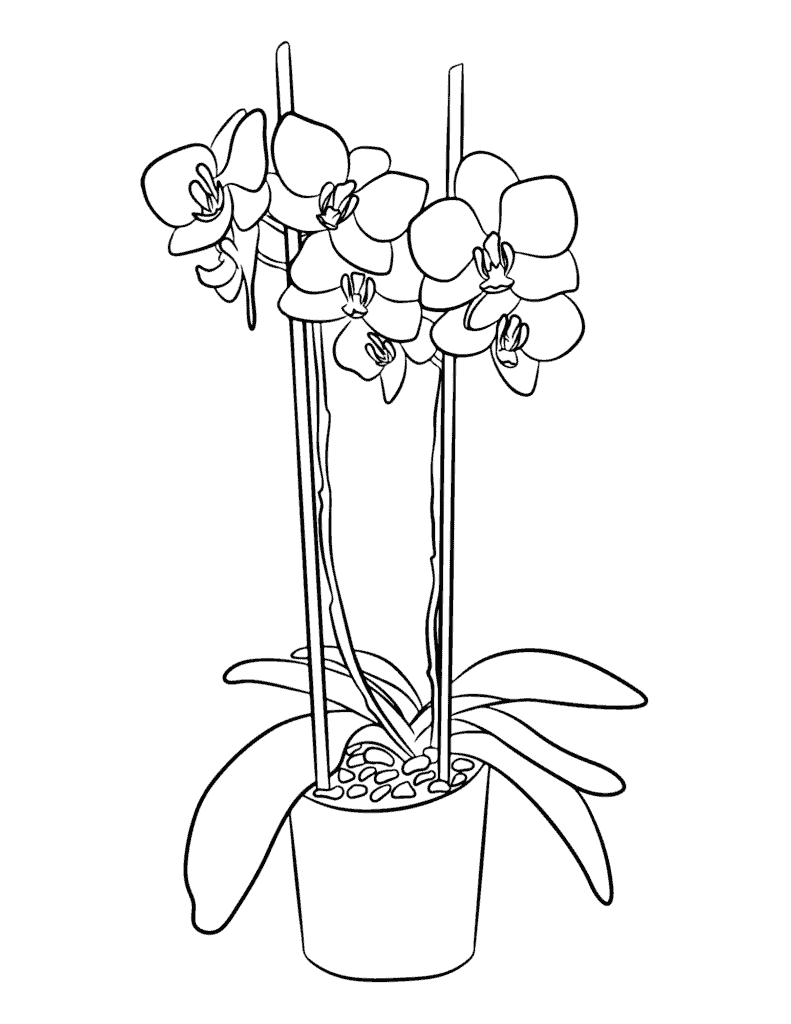

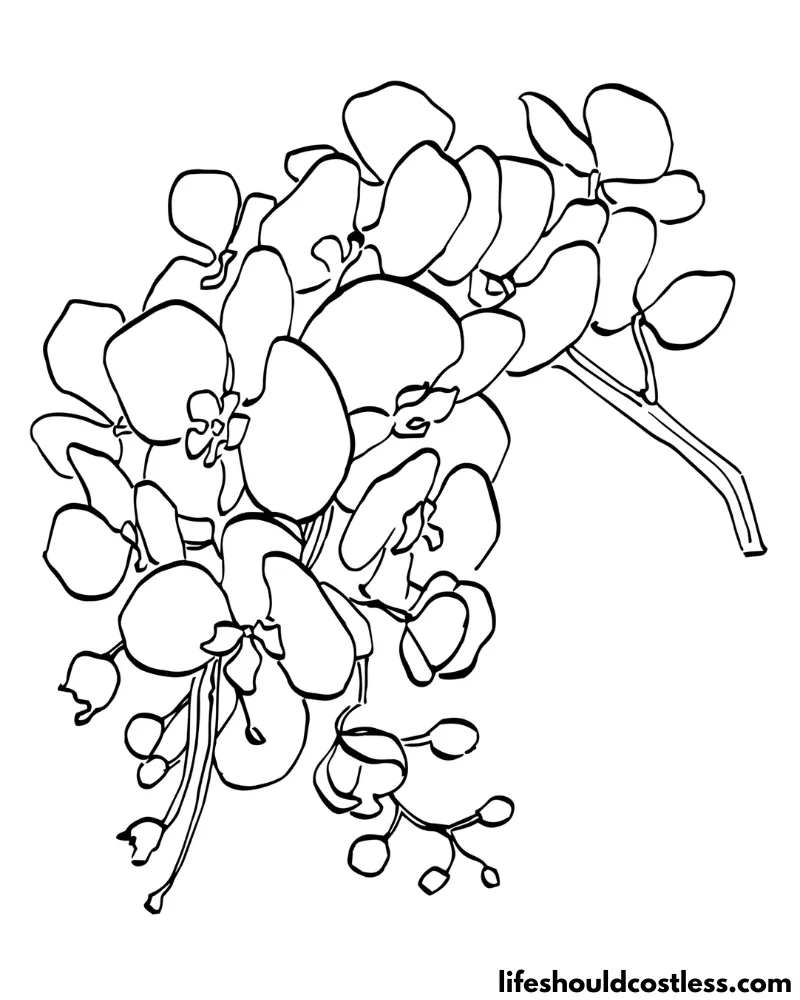
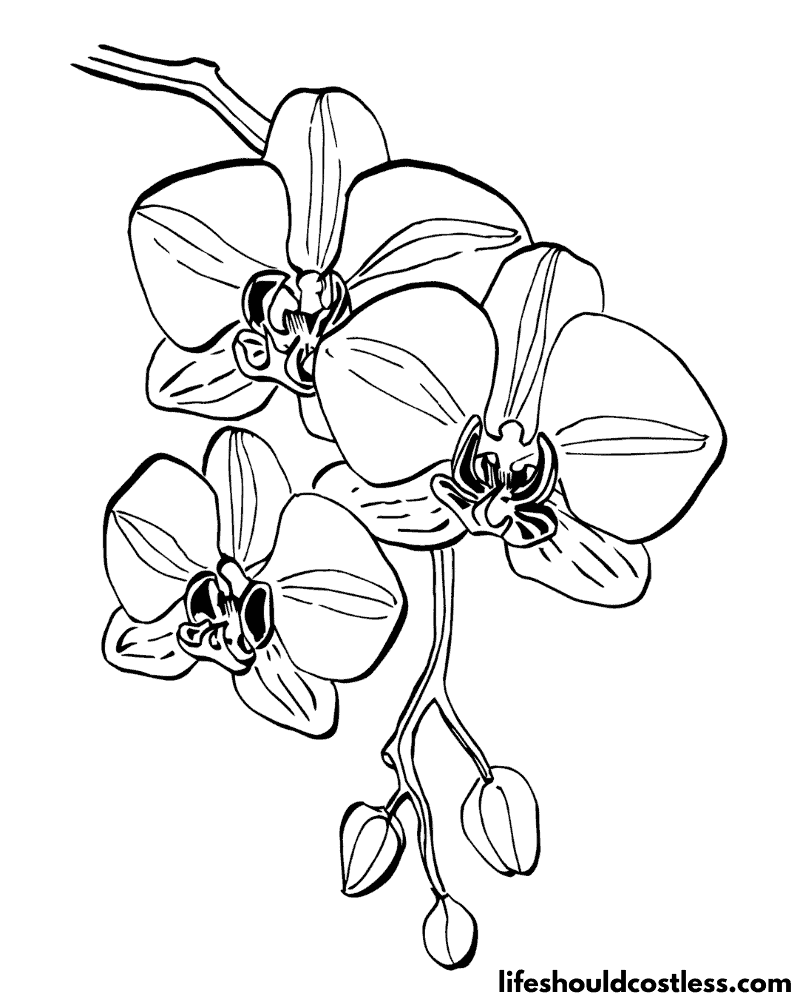
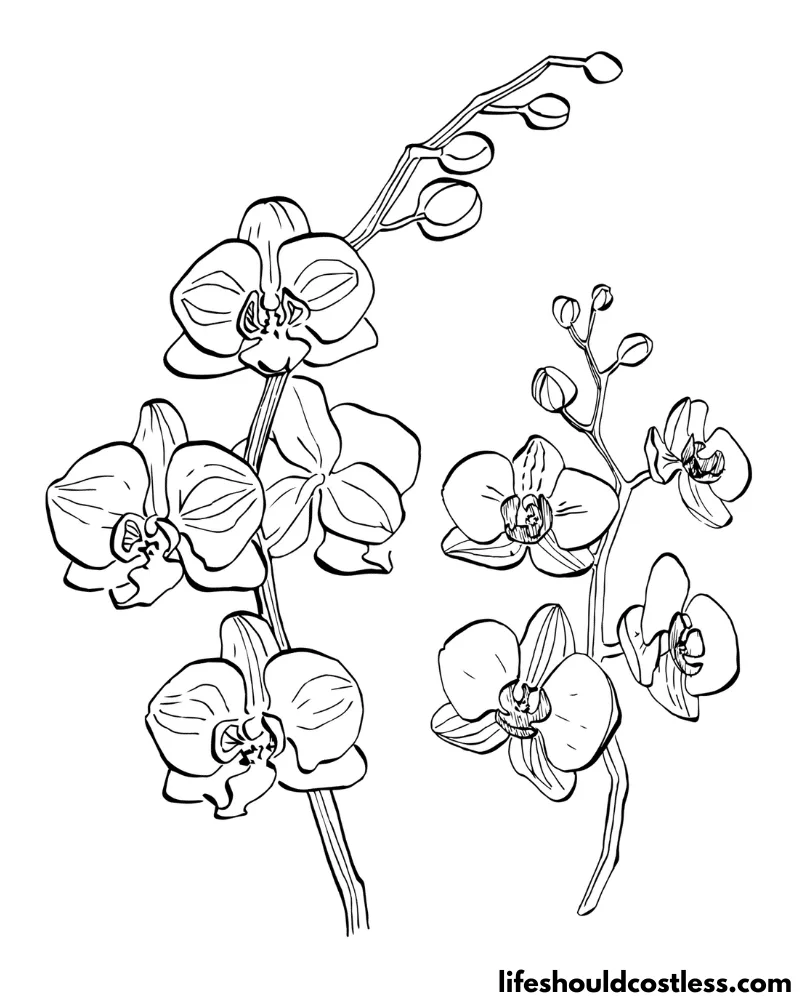

FAQ’s
Orchids come in a wide variety of colors, and their coloration can range from pure white to deep purple and nearly every shade in between.
Some common orchid colors and variations include:
White
Pink
Purple
Blue
Yellow
Red
Orange
Green
Multi-Colored
Brown
It’s important to note that orchid coloration can vary not only between species but also within a single species due to different growing conditions, genetics, and hybridization.
This diversity in color is one of the many reasons orchids are so highly prized among plant enthusiasts and collectors.
*I will add more orchid colour / color questions and answers as the questions get sent to me.
Conclusion
In conclusion, exploring the world of orchid coloring pages is not only a delightful artistic endeavor but also a gateway to a deeper appreciation of the exquisite beauty found in these remarkable flowers.
With an array of colors and patterns to choose from, our orchid images provide a canvas for creativity and relaxation. Whether you’re a seasoned artist or a coloring enthusiast, the intricate details of orchids offer a rewarding and therapeutic experience.
So, pick up your coloring tools, bring these botanical wonders to life on paper, and let the captivating allure of orchids inspire your artistic journey.
Thanks so much for stopping by my blog and supporting my endeavors to make people’s lives a little easier/better/more affordable.
If you liked this post, or found it helpful in any way, please make sure to share it with your family, friends, and co-workers via social media.
Or you could even send them the direct link via email. Whichever way you choose to spread the love, I super appreciate it! ~Sarah

How To Follow & Support This Site
- If you would like to subscribe to my email list, go here.
- Make sure to follow along via social media, by going here.
- If you would like to learn how to really show your support to this site (at no cost to you), go here.
- If you would like to make a direct donation to the site, go here.
Check out my other free printables
- To see all of my free printables, go here.
- To see an alphabetized index of my coloring pages, go here.
- To see all of my botanicals coloring pages, go here.
- To see all of my floral coloring pages, go here.
Otherwise, here are direct links to several of my other related posts that you’re also going to love:
Botanicals / Floral & Misc
Botanicals / Fruits
Other good resources for a printable orchid
- https://www.turtlediary.com/coloring-sheet/orchid-coloring-page.html
- https://www.thecolor.com/Coloring/Orchid-coloring-page.aspx
*This post was originally shared to this blog on 12/05/2023, and has since been updated to improve user experience, as well as to make it as shareable as possible across the social medias.
**Please note that I do try my hardest to provide factual, but easy to understand, information about each topic. If you notice a discrepancy in my coloring pages, facts, or see something that you deem “misinformation/incorrect” please make sure to notify me about it. I would prefer that you send me an email with a link to a more reputable resource on that subject, so that I can correct it as soon as possible. Thanks so much for helping this site become the best that it can be!
***Resources from djinkers were used in the production of this article.
***Resources from djinkers were used in the production of this article.
